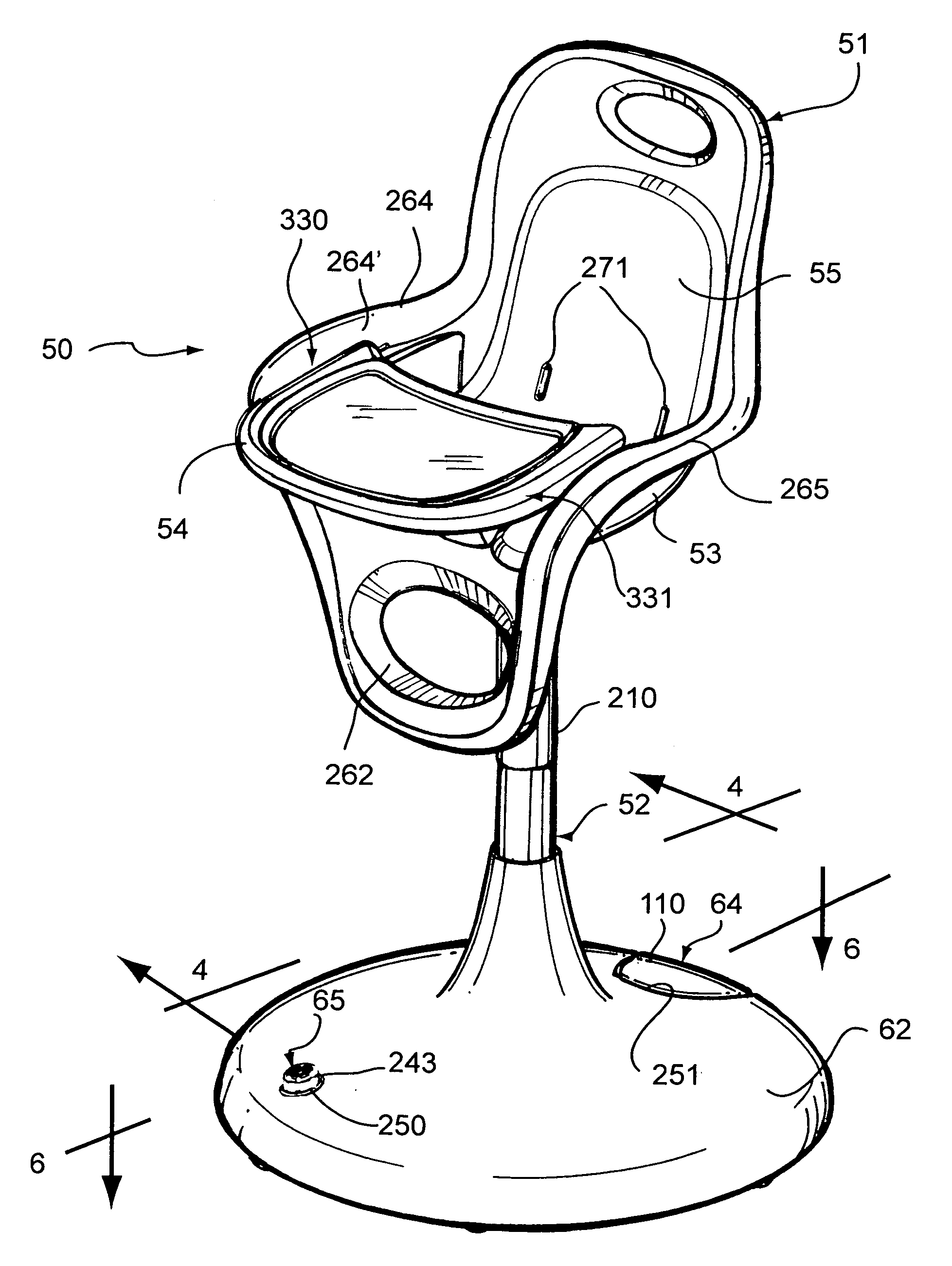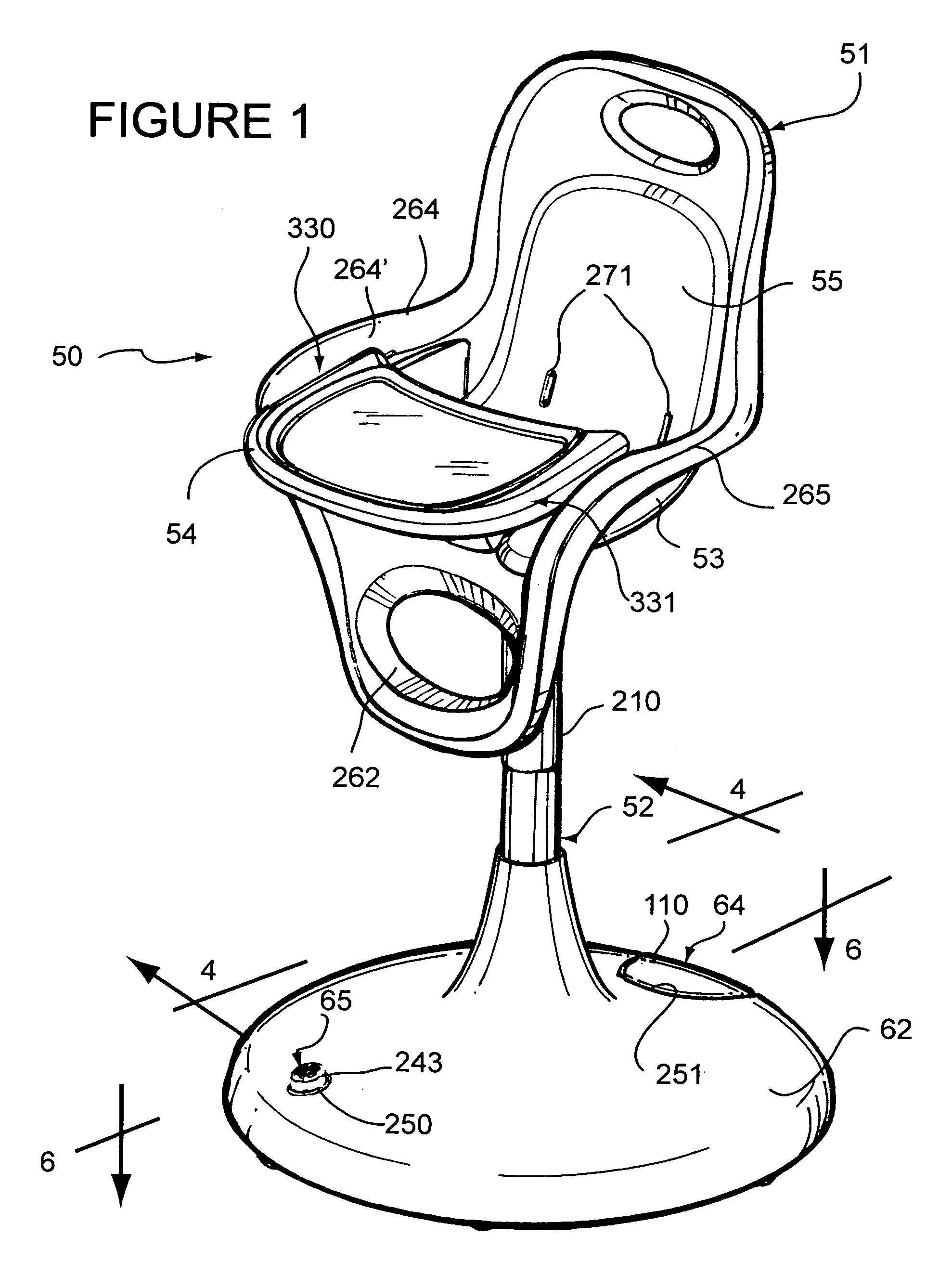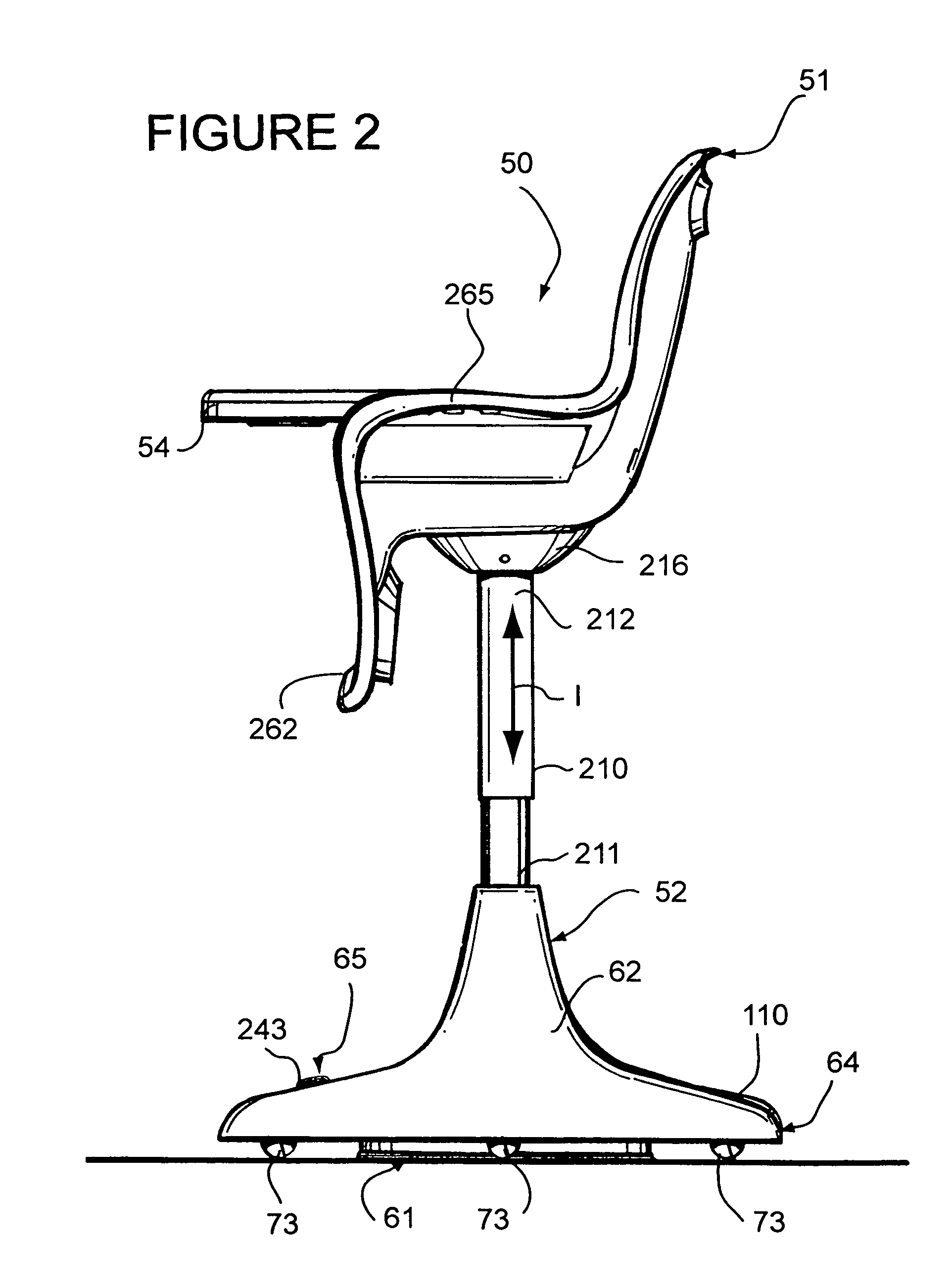Highchair
a highchair and seat technology, applied in the field of highchairs, can solve the problems of fewer features, less flexibility, occupying more space, difficult construction, etc., and achieve the effect of convenient raising and lowering the seat and low cos
- Summary
- Abstract
- Description
- Claims
- Application Information
AI Technical Summary
Benefits of technology
Problems solved by technology
Method used
Image
Examples
Embodiment Construction
[0034]Turning now to the drawings, in which like reference characters indicate corresponding elements throughout the several views, attention is first directed to FIG. 1 in which there is seen a high chair, embodying the principles of the instant invention and generally designated by the reference character 50. High chair 50 includes a seat assembly 51 supported by a base 52 at an elevated location. Seat assembly 51 generally consists of a seat 53 for accommodating a toddler in a seated position, and a tray 54. In FIG. 1, a seat pad 55 is positioned on seat 53 onto which a toddler is to be received in a seated position providing comfortable seating. Seat pad 55 is fashioned of foam, foam rubber, or the like, can be removed, if desired, and is considered part of seat 53 when positioned thereon.
[0035]FIG. 3 is an exploded perspective view of high chair 50 illustrating the main components thereof, namely, seat assembly 51 including seat 53 and tray 54 and seat pad 55, and base 52 inclu...
PUM
 Login to View More
Login to View More Abstract
Description
Claims
Application Information
 Login to View More
Login to View More - R&D
- Intellectual Property
- Life Sciences
- Materials
- Tech Scout
- Unparalleled Data Quality
- Higher Quality Content
- 60% Fewer Hallucinations
Browse by: Latest US Patents, China's latest patents, Technical Efficacy Thesaurus, Application Domain, Technology Topic, Popular Technical Reports.
© 2025 PatSnap. All rights reserved.Legal|Privacy policy|Modern Slavery Act Transparency Statement|Sitemap|About US| Contact US: help@patsnap.com



